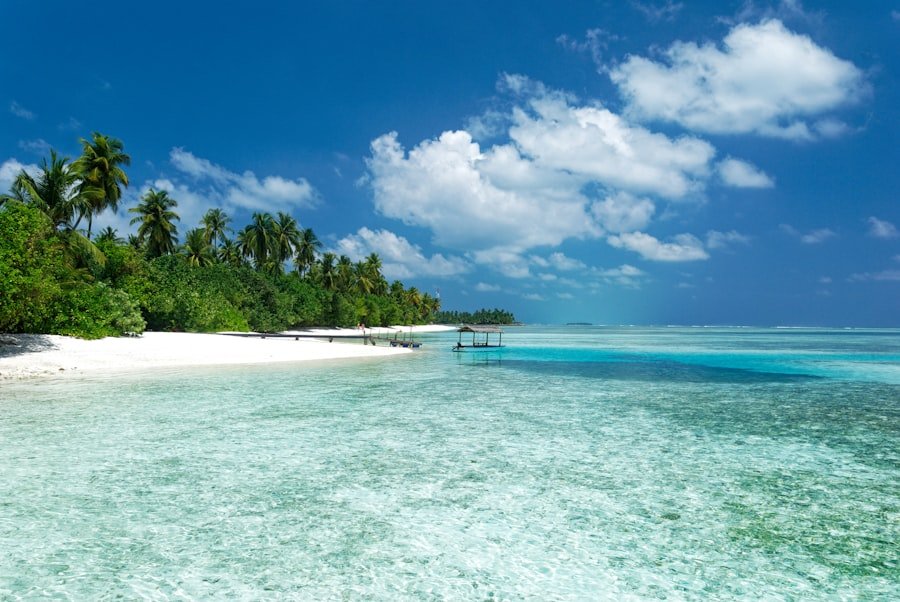Zanzibar, an archipelago off Tanzania’s coast, experiences a tropical climate with two distinct seasons: rainy and dry. The islands maintain high temperatures and humidity year-round, with minimal temperature fluctuations between seasons. The Indian Ocean and regional trade winds significantly influence the climate, creating ideal conditions for beach holidays and water activities.
The rainy season typically spans from March to May, with April receiving the heaviest rainfall. This period is characterized by frequent, intense downpours and thunderstorms, occasionally causing flooding in low-lying coastal areas. Conversely, the dry season occurs from June to October, featuring minimal rainfall, clear skies, and abundant sunshine.
This period is optimal for outdoor activities and beach vacations. Understanding Zanzibar’s climate is crucial for trip planning, as it can substantially impact visitors’ experiences on the island.
Key Takeaways
- Zanzibar has a tropical climate with two main seasons: the rainy season and the dry season.
- The best time to visit Zanzibar is during the dry season, from June to October, when the weather is sunny and dry.
- Zanzibar’s rainy season occurs from March to May, with heavy rainfall and high humidity, making it less ideal for tourism.
- The dry season in Zanzibar brings lower humidity and comfortable temperatures, perfect for beach activities and outdoor exploration.
- Zanzibar experiences high temperatures and humidity throughout the year, with the hottest months being December to March.
Best Time to Visit Zanzibar
The best time to visit Zanzibar is during the dry season, which runs from June to October. This period offers plenty of sunshine and minimal rainfall, making it ideal for beach holidays and outdoor activities. The clear skies and warm temperatures create perfect conditions for swimming, snorkeling, and diving in the crystal-clear waters of the Indian Ocean.
Additionally, the dry season coincides with the migration of humpback whales along the coast of Zanzibar, providing a unique opportunity for whale watching. Visiting Zanzibar during the dry season also allows travelers to explore the island’s rich cultural heritage and historical sites without the interruption of heavy rainfall. The warm and sunny weather makes it comfortable to visit attractions such as Stone Town, a UNESCO World Heritage Site known for its narrow streets, bustling markets, and ancient architecture.
Overall, the best time to visit Zanzibar is during the dry season when the weather is most favorable for enjoying all that the island has to offer.
Zanzibar’s Rainy Season

Zanzibar’s rainy season typically occurs from March to May, with April being the wettest month. During this time, the island experiences heavy rainfall and frequent thunderstorms, which can lead to localized flooding in some areas. The rainy season can also bring high humidity levels, making it feel even hotter than it actually is.
While the lush vegetation and blooming flowers may be a sight to behold, the heavy rainfall can disrupt outdoor activities and water-based excursions. The rainy season in Zanzibar can also impact travel plans, as some roads may become impassable due to flooding, and boat trips may be canceled or delayed due to rough seas. Additionally, outdoor attractions and historical sites may be less enjoyable to visit during this time, as the wet conditions can make exploring uncomfortable.
It’s important for travelers to be prepared for the rainy season in Zanzibar by packing appropriate clothing and footwear, as well as being flexible with their itinerary in case of inclement weather.
Zanzibar’s Dry Season
| Month | Average Temperature (C) | Rainfall (mm) | Humidity (%) |
|---|---|---|---|
| June | 26 | 10 | 70 |
| July | 27 | 5 | 65 |
| August | 28 | 3 | 60 |
Zanzibar’s dry season runs from June to October and is characterized by clear skies, plenty of sunshine, and minimal rainfall. This period offers ideal conditions for beach holidays and outdoor activities such as snorkeling, diving, and swimming in the warm waters of the Indian Ocean. The dry season also provides an opportunity to explore Zanzibar’s cultural and historical attractions without the interruption of heavy rainfall.
The lack of rain during the dry season allows travelers to enjoy outdoor excursions and water-based activities without the risk of cancellations or delays due to inclement weather. The warm and sunny conditions make it comfortable to visit attractions such as Stone Town, Jozani Chwaka Bay National Park, and Prison Island. The dry season in Zanzibar is also a popular time for festivals and events, including the Zanzibar International Film Festival (ZIFF) and the Mwaka Kogwa festival, which celebrate the island’s culture and heritage.
Zanzibar’s Temperature and Humidity
Zanzibar experiences high temperatures and humidity throughout the year due to its tropical climate. The average temperature on the island ranges from 25°C (77°F) to 31°C (88°F), with little variation between the rainy season and the dry season. The high humidity levels can make it feel even hotter than it actually is, particularly during the rainy season when moisture levels are at their peak.
The combination of high temperatures and humidity in Zanzibar can make outdoor activities and sightseeing uncomfortable for some travelers, especially those who are not accustomed to tropical climates. It’s important for visitors to stay hydrated and take regular breaks in shaded areas to avoid heat-related illnesses. Additionally, packing lightweight and breathable clothing made from natural fibers can help travelers stay cool and comfortable in Zanzibar’s warm and humid conditions.
How Zanzibar’s Weather Affects Tourism

Peak Tourist Season: June to October
During this time, visitors flock to the island to enjoy beach holidays, water-based activities, and cultural experiences without the interruption of heavy rainfall. The warm and sunny weather creates perfect conditions for exploring Zanzibar’s historical sites, indulging in water sports, and relaxing on its pristine beaches.
The Rainy Season: March to May
Conversely, the rainy season from March to May can deter some travelers from visiting Zanzibar due to the heavy rainfall and high humidity levels. The wet conditions can disrupt outdoor activities and water-based excursions, making it less appealing for tourists seeking a sun-filled vacation.
Hidden Gems of the Rainy Season
However, some travelers may find value in visiting Zanzibar during the rainy season for its lush vegetation, fewer crowds, and lower accommodation rates.
Tips for Packing for Zanzibar’s Weather
When packing for a trip to Zanzibar, it’s important to consider the island’s tropical climate and varying weather conditions throughout the year. Lightweight and breathable clothing made from natural fibers such as cotton or linen is essential for staying cool and comfortable in Zanzibar’s high temperatures and humidity levels. Packing a wide-brimmed hat, sunglasses, and sunscreen is also recommended to protect against the strong sun rays.
For visits during the rainy season, it’s advisable to pack a waterproof jacket or poncho, as well as quick-drying footwear for navigating through wet conditions. Insect repellent is also essential for warding off mosquitoes, particularly during the rainy season when their populations are at their peak. Additionally, packing swimwear, snorkeling gear, and water shoes is recommended for enjoying water-based activities during both the rainy and dry seasons.
In conclusion, understanding Zanzibar’s climate is crucial for planning a successful trip to this tropical paradise. By considering the island’s rainy season, dry season, temperature, humidity levels, and their impact on tourism, travelers can make informed decisions about when to visit and how to prepare for varying weather conditions. With proper planning and packing, visitors can fully enjoy all that Zanzibar has to offer throughout the year.
If you’re planning a trip to Zanzibar, it’s important to consider the weather before you go. The island experiences a tropical climate, with hot and humid conditions throughout the year. To learn more about the best time to visit Zanzibar and what to expect in terms of weather, check out this article on Your Zanzibar. This comprehensive guide for travelers and investors provides valuable insights into the weather patterns of Zanzibar and how they can impact your trip.
FAQs
What is the weather like in Zanzibar?
The weather in Zanzibar is typically warm and tropical, with temperatures ranging from 25°C to 30°C throughout the year.
When is the best time to visit Zanzibar based on the weather?
The best time to visit Zanzibar is during the dry season, which runs from June to October. This is when the weather is most pleasant, with lower humidity and minimal rainfall.
What is the rainy season in Zanzibar?
The rainy season in Zanzibar occurs from November to May, with the heaviest rainfall typically falling in April and May.
What is the average humidity in Zanzibar?
The average humidity in Zanzibar ranges from 70% to 80% throughout the year, with higher levels during the rainy season.
Does Zanzibar experience any extreme weather conditions?
Zanzibar is prone to occasional tropical cyclones, particularly during the rainy season. These can bring heavy rainfall and strong winds to the region.






